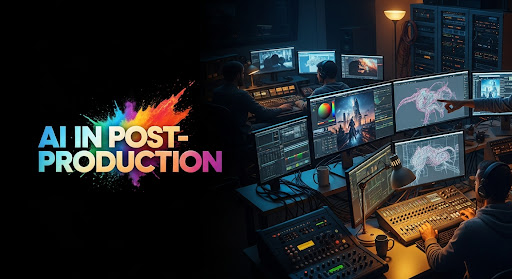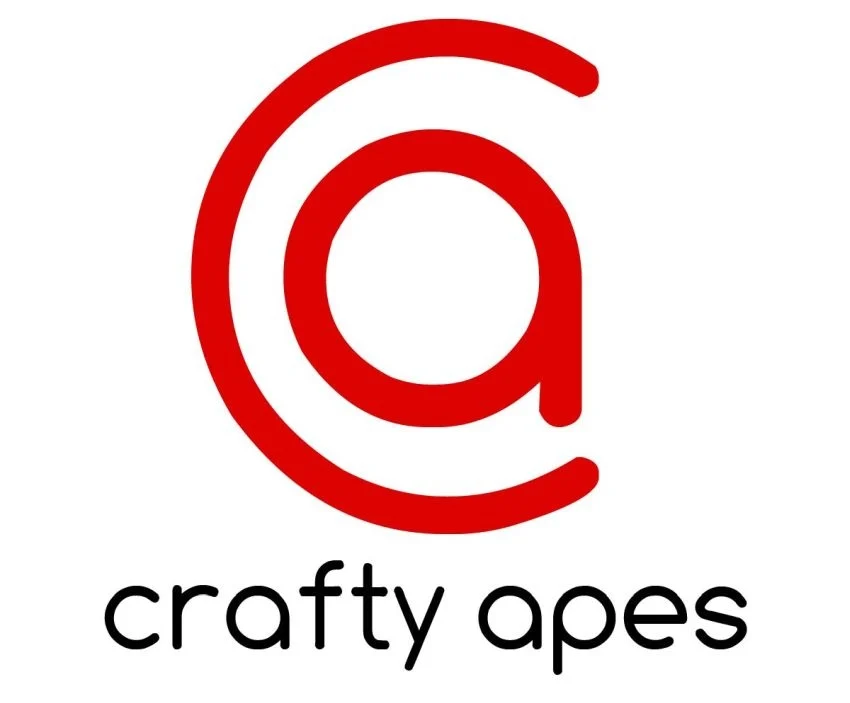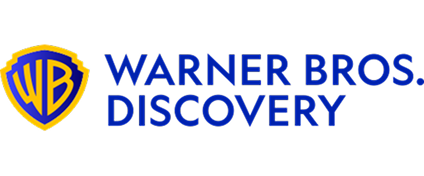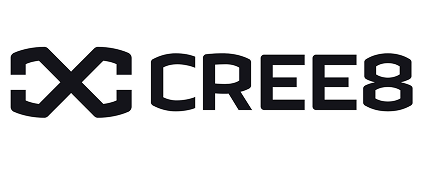AI in Post‑Production: How Intelligent Tools Are Revolutionizing Editing, VFX & Sound

Introduction
From automated rotoscoping to real-time dubbing and AI-driven color matching, AI in post-production is reshaping how creative teams deliver content—faster, smarter, and at lower cost. But where does this leave human creativity, and how do you choose the right tools? Vitrina breaks down the use cases, pitfalls, and vendor ecosystem that define AI-powered post workflows today.
Key Takeaways
| Topic | Description |
|---|---|
| Workflow Automation | AI tools like Adobe Sensei and DaVinci’s Neural Engine reduce manual labor in editing and VFX prep. |
| Localization | AI-enabled dubbing and lip-sync solutions allow for faster, scalable global distribution. |
| Creative Control | AI assists rather than replaces creatives, enhancing accuracy and speed. |
| Ethical Impact | Unions and creators are questioning AI’s role in credit, authorship, and job security. |
AI in Post‑Production: An Overview
Artificial Intelligence (AI) is no longer a future consideration for post-production teams—it’s a current operational advantage. From Hollywood studios to regional content creators, AI tools are already performing tasks once reserved for human editors, VFX artists, and audio engineers. In 2025, the most advanced post-production workflows are hybrid: blending human decision-making with AI-powered automation to boost efficiency without compromising creativity.
AI doesn’t just make things faster; it makes complex tasks more accessible. Creative leads can now automate shot matching, isolate audio from noisy footage, or translate lip-synced dialogue into five languages—all from a browser-based interface. These tools are improving time-to-delivery, reducing outsourcing dependencies, and enabling rapid iteration cycles previously only possible in enterprise studios.
Key Areas AI Is Transforming
AI for Editing & Workflow Automation
AI editing tools now go beyond simple cuts and transitions. They detect scene boundaries, identify characters, generate transcripts, and even make editorial suggestions based on pacing, shot type, and sentiment. DaVinci Resolve’s Neural Engine enables facial recognition for timeline sorting, scene detection, and magic mask compositing—all at frame-accurate precision.
Adobe’s Firefly and Sensei systems power automated editing suggestions and smart content-aware fills in After Effects and Premiere Pro. These aren’t speculative features: editors are already using them to reframe interviews, stabilize footage, and sync audio from raw files—instantly. At the 2025 NAB Show, Adobe unveiled generative sound effects triggered by voice prompts or scripts, reducing the need for external sound libraries or Foley teams.
Want to Connect Your Film with the Right Audience Worldwide?

AI in Colour Grading & VFX
One of the most transformative uses of AI in post-production lies in the precision and consistency it brings to colour grading and VFX. Tools like Colourlab AI and DaVinci Resolve’s Magic Mask now allow for intelligent LUT (Look-Up Table) suggestions, automatic skin tone matching, and scene-to-scene colour consistency with minimal manual correction.
AI-based rotoscoping—offered by platforms like Runway ML—reduces the time required to isolate characters or remove backgrounds from hours to minutes. This means VFX pipelines can spend more time on creative enhancement and less on prep work. In 2025, Adobe Firefly introduced AI-generated background enhancements and motion overlays, triggered by script context or visual metadata.
Accelerate Grading & VFX with Smart AI Assistants

AI for Sound, ADR & Localization
Sound design, ADR, and localization have traditionally been costly and time-consuming—especially for global releases. AI is rapidly changing that. Startups like Flawless and ElevenLabs are enabling real-time lip sync and multilingual dubbing using voice cloning and video alignment algorithms. These tools analyze actor facial data and regenerate dialogue in multiple languages while maintaining natural emotion and timing.
In 2025, Netflix deployed AI-generated VFX and ADR for the series El Eternauta, accelerating its post timeline by nearly 10× according to PC Gamer. Amazon Studios has trialed emotion-aware dubbing to preserve original performance intensity across markets. Meanwhile, platforms like Descript and Veritone Voice are popular among mid-tier producers for voice editing and international dubbing.
Explore AI-Powered Localization Partners on Vitrina

Emerging Trends & Case Examples
The 2025 NAB Show highlighted “Agentic AI”—a concept where intelligent assistants not only support but independently execute tasks like organizing footage, indexing metadata, or even generating dailies. This trend reflects a shift from tool-based automation to outcome-based intelligence.
Runway, Adobe, and Blackmagic have each introduced autonomous assistants that take user input (e.g., “make this look like Blade Runner”) and return a graded and edited sequence using trained models. Real-time monetization workflows—like inserting sponsor content dynamically into background plates—are also being piloted in sports and OTT verticals.
Meanwhile, companies like Colossyan and Synthesia are advancing avatar-based localization, where an AI presenter delivers content across languages without human talent—ideal for corporate or educational content that needs scale.
Track the Fastest-Moving AI Trends in Post

Challenges & Ethical Considerations
Despite the excitement, AI in post-production raises real ethical and operational concerns. Unions like IATSE and the Writers Guild have voiced concerns about how AI-generated voice, dialogue, and visual content might reduce the need for human creatives—without offering them credit or compensation. The 2023 Hollywood strikes already featured early negotiations around AI usage, and those concerns have grown louder in 2025.
There are also legal and reputational risks. Using unauthorized likenesses, voiceprints, or visual content for AI training can violate copyright and privacy laws. Studios must also consider cultural localization risks—AI might get language right but miss cultural nuance, which can harm regional audience perception.
Lastly, there’s the challenge of over-reliance. AI is best used as a co-pilot, not a replacement. It lacks emotional depth, contextual logic, and visual taste—areas where human judgment still reigns supreme.
Choosing the Right AI Tools
There’s no one-size-fits-all AI tool in post. Some teams benefit from platform ecosystems like Adobe’s Sensei-powered suite, while others prefer niche tools like Runway for VFX rotoscoping or Descript for podcast post. Studios scaling localization need very different tools than those working on experimental immersive narratives.
Key evaluation factors include: dataset transparency, creative control, speed-to-deploy, cost of ownership, and interoperability with existing NLEs or color tools. Vitrina’s comparative intelligence reports help studios align tools with their creative pipeline stage, target markets, and budget tolerance.
Conclusion
AI is no longer an emerging toolset in post-production—it’s a critical component of modern content delivery. Used wisely, it augments human creativity, speeds up production, and reduces repetitive labor. But like any tool, success lies in how it’s implemented and who’s driving it. Whether you’re working on high-end episodics or regional OTT dubs, the future of post belongs to studios that master both AI and artistry.Get Your Vitrina Membership Today
Frequently Asked Questions
AI supports editing, color grading, VFX, dubbing, and localization tasks—enhancing speed and reducing manual workload.
DaVinci Resolve’s Neural Engine, Adobe Firefly, and Runway ML are among the top tools adopted by studios in 2025.
No—AI automates repetitive or time-consuming tasks, but human judgment is still essential for storytelling and aesthetic quality.
Key risks include over-dependence, ethical concerns about credit and consent, and limitations in emotional nuance or cultural translation.



























